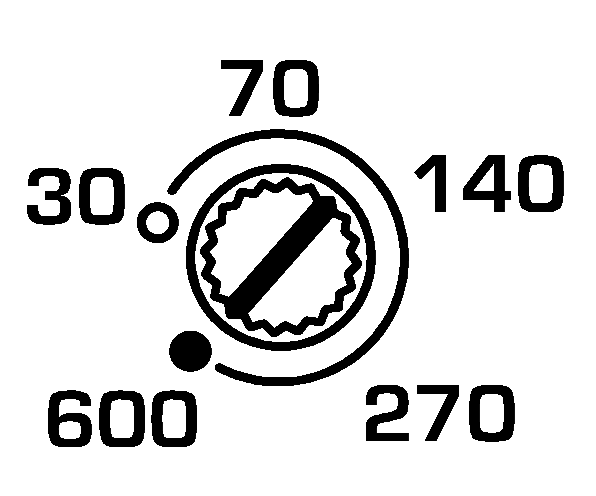What years where the ZX series amplifiers produced?
1996 - 1999
Why does the ZX series amplifiers have such small output power at 12 volts
compared to 14 volts?
The 12 volt rating is very conservative and used in most
competition organizations.
How do I tell what frequency my
crossover is set as since only the lowest and highest frequencies are labeled?

The frequency dial is not linear, so if you set the crossover
dial halfway in-between 30 and 600 Hz the frequency will NOT be 300. The
above picture gives you an accurate display of where the crossover settings are
at. Of course the best frequency for the crossover to be set at is the frequency
that sounds best to your ears.
How much power does my ZX amplifier make
at 2 ohms bridged?
When designing the ZX amps we wanted a design that made its best power at
normal loads. By that we mean 4 ohms bridged. Now we know that no matter what we say or how loud we say it people will still hook the amp up to
lower impedances trying to get more power. So our number one goal is that the amp continue to operate at lower impedances. The only way to do that is
to limit the power output of the amp when it's hooked up to lower impedances. But it really isn't that big of a deal. Here's why:
Wattage is equal to voltage times current. Running the amp at 2 ohms bridged means more output current. Current makes heat. We can't allow the
amp to make more heat than the fan can deal with. The fan can deal with a bit more heat than what's generated from a 4 ohm
bridged load. So there's some room for more power. Here's how we limit the power increase to what's
manageable:
The ZX amps have a circuit that detects the amount of current going out of the speaker
terminals. If the current is high enough AND last long enough (longer than 100 milliseconds), the circuit limits the amount of voltage
that the power supply can produce. This in turn limits the power output of the amp. So continuous power output remains about
the same with the power composed of more current and less voltage.
But there is a bright side to all this. Remember I said that the excess current demand had to last longer than 100ms. The dynamic peaks in most
music last less than 20ms. So the circuit never has a chance to effect the power supply voltage for musical peaks. All this means that the amp IS
allowed to make more power with musical peaks while continuous power remains about the same. You could say that the "headroom" of the amp is increased.
If you want to run the amp 2 ohms bridged, go for it. Just understand that
it will run slightly hotter and will pull more current from your car to make those musical peaks (add more
capacitors and use thick gauge power/ground wire). I wouldn't recommend running it 1 ohm bridged. The amp will shut down (red LED) if the output
current gets too high (looks like a shorted speaker).

![]()